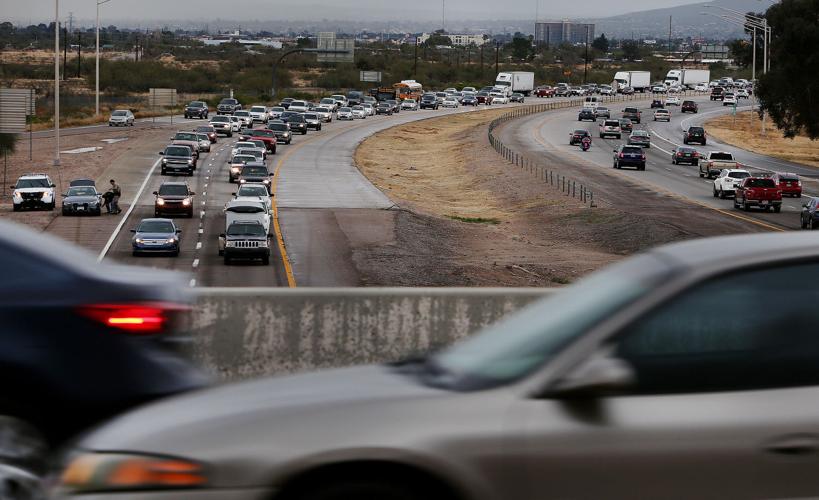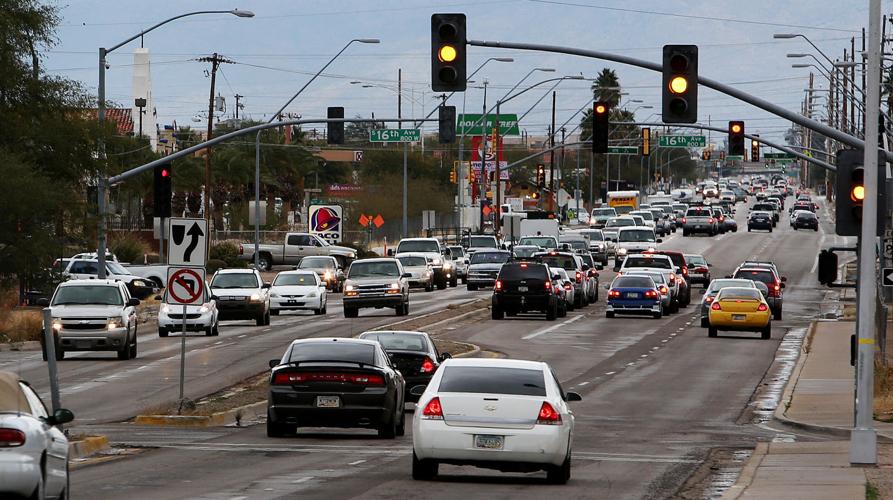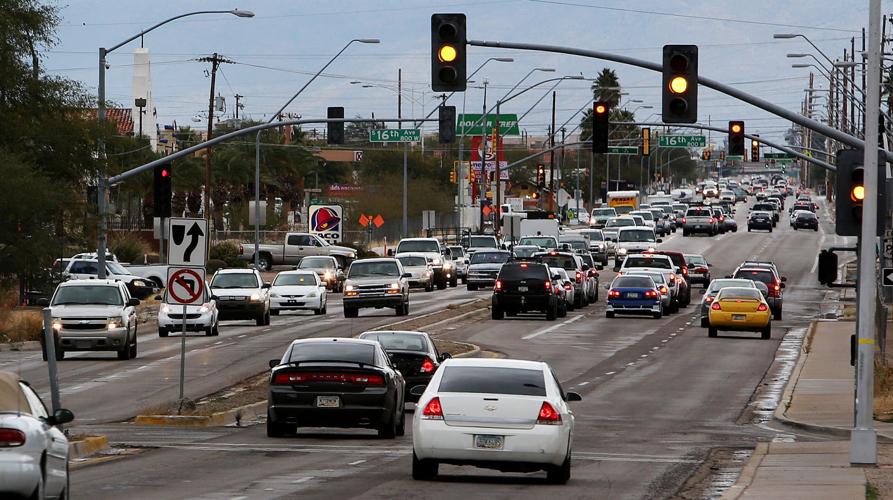Drivers on the city’s south side can expect congestion, backups and headaches.
It’s not the winter flu season, but rather the Arizona Department of Transportation’s plan to begin construction of a new interchange at Interstate 19 and West Ajo Way.
“We would anticipate having the first phase completed by the end of next year,” said ADOT’s Dustin Krugel.
And while motorists can plan to experience all the ailments listed above at regular intervals over the next few years, this project is a badly needed improvement.
Traffic counts for the section of I-19 total almost 100,000 vehicles per day. That’s far more cars than the 50-year-old clover-leaf shaped interchange was ever intended to handle.
“Obviously, it’s not designed to accommodate the significant traffic flows we see now,” Krugel said.
The work for the first phase includes widening 500 feet of the southbound Irvington Road offramp for an additional turn lane, widening Ajo Way east of the interstate and upgrading the traffic signal at South 16th Avenue. It also adds noise walls on both sides of I-19 between Ajo Way and the West Michigan Avenue pedestrian bridge, drainage improvements, reconstruction of South Lamar Avenue west of the interstate and repaving of South Elizabeth Drive east of I-19.
The cost for the first phase is estimated at $40 million.
The second phase, which likely won’t start until fiscal 2018, includes reconstruction and widening of southbound I-19 and construction of a “braided” ramp alignment, with the southbound Ajo Way on-ramp passing over the southbound Irvington offramp. It would also widen northbound I-19, complete I-19 noise walls south of Michigan Avenue, replace the Michigan Avenue pedestrian bridge, replace the Santa Cruz River Bridge on Ajo Way and widen Ajo Way from South Holiday Boulevard to I-19.
The cost of the second phase is estimated at $29 million.
In all, the more-than-three-year project will cost nearly $70 million.
When it’s all done, Krugel said the configuration of the new interchange will look similar to one at I-19 and Valencia.
It’s a form of interchange called a Single Point Urban Interchange, or SPUI. A “Spooey,” in traffic engineer speak, controls traffic flows from a single set of signals at the center of an interchange.
“They are designed to move large volumes of traffic more efficiently and safely,” Krugel said.
Access to businesses in the project areas will be maintained.
Initial utility work could start this week, and major construction is likely to begin in April.
The interchange is one of numerous projects ADOT has on tap for the Tucson region.
Others include construction of a new interchange at Ina Road and I-10, widening of State Route 86 (Ajo Way) from Valencia to Kinney Road, and the continued resurfacing project on I-10 from the SR 83 junction near Vail to Benson.
The last project also includes replacement of the bridges over Davidson Canyon.
This project has caused a lot of delays for motorists, but unfortunately there are no great options to avoid the construction.
The detour ADOT officials have used includes driving the loop from SR 83 south to SR 82, then east to SR 90.
It adds a lot of miles to the trip, but at least you’ll be moving rather that sitting in a highway traffic jam.
Down the road
- City crews resumed milling and paving work on North Campbell Avenue from East Fort Lowell Road to East Glenn Street over the weekend. The work is scheduled to be complete by about 11 p.m. Monday night.
- On Monday and Tuesday, crews will lower manhole covers and water valve covers on East 22nd Street from South Tucson Boulevard to South Alvernon Way. Work will take place from 7 a.m. to 6 p.m. both days.
- On Wednesday, milling and paving on the same stretch of 22nd Street is scheduled to start. Work hours will be from 7 a.m. to 6 p.m., Monday through Friday.
This work is scheduled to be complete by Friday, Jan. 29.
- Construction of a hotel on Broadway at Fifth Street downtown will require the closure of the left lane of eastbound Broadway through May 2017. The lane will be closed between Fifth and Sixth streets during daytime hours throughout this time.







